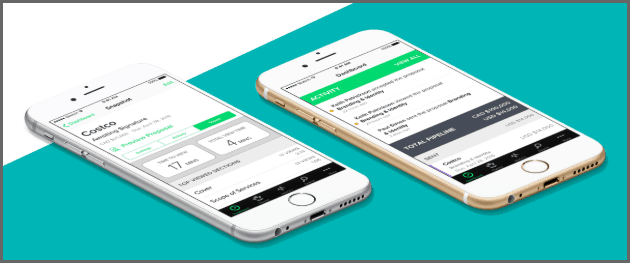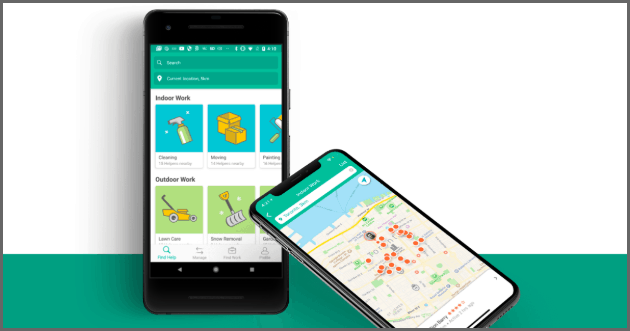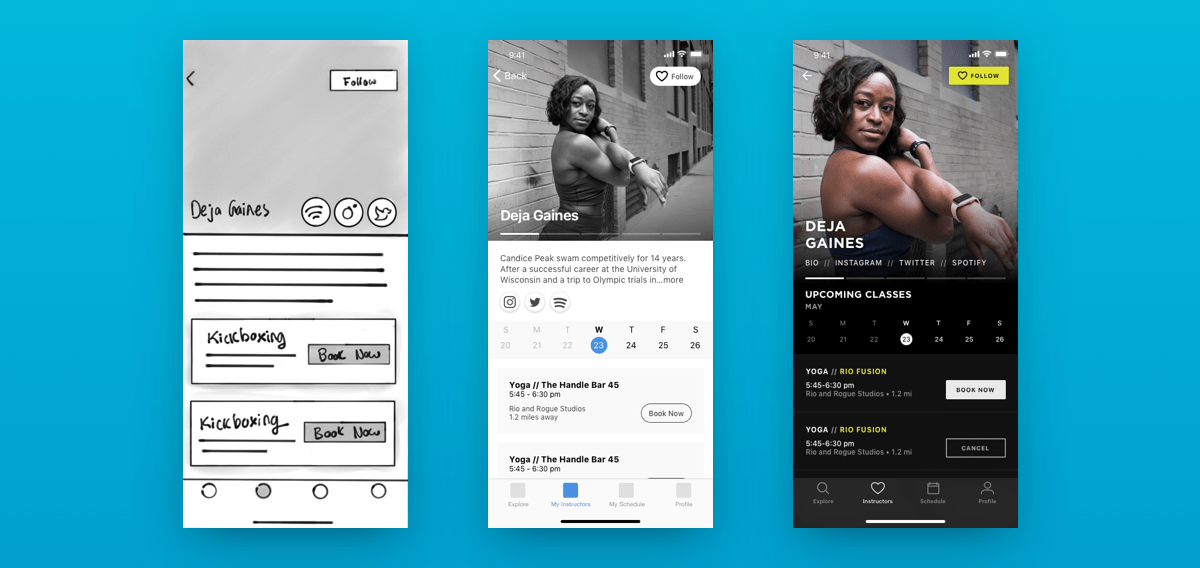Introduction
This post will help you decide if a mobile app is right for you in 2019.
When it comes to building a mobile app, there are three big questions you need to ask first. These three questions will help you determine whether a mobile app is the right call for your brand:
- Does a mobile app align with your 2019 goals?
- Do your customers want a mobile app?
- Do you have the resources to build a mobile app?
(LINK TO SECTIONS)
And with that, let’s dive in.
About The Authors
We’re the MindSea team.
Since 2009, we’ve been focused exclusively on mobile. In that time we’ve built mobile apps for both B2B and B2C SaaS brands—apps that have gone on to be downloaded by millions of people.
We’ve worked with brands like Proposify:

Adam Helps:

And National Post:

Why are we telling you this?
It’s not to brag about what we’ve done—it’s so that you can be 100 percent certain you’re learning from a team of people who know what they’re talking about when it comes to helping major brands decide whether a mobile app is right for them.
And that’s what this post is all about.
1. Does A Mobile App Align With Your 2019 Goals?
The very first question you need to ask before investing in a mobile app is whether it’s going to bring you closer to achieving your 2019 goals.
If the answer is yes, awesome—full steam ahead.
But if the answer is no, tying up your resources (people and capital) in building a mobile app that isn’t going to help you crush your goals for the year may not be the best idea.
What are your primary goals for the year to come?
More users?
More revenue?
Less churn?
Your goals don’t have to be quantifiable either. For example, Proposify wanted to take their product from a desktop-only solution to an on-the-go solution their users could access anyplace, anytime.
Whatever you want to achieve in 2019, a mobile app could play a significant role in helping you get there.
Before you keep reading, here’s what you need to do:
- Map out your primary company goals for 2019
- Think about where a mobile app fits into the mix
(If you’re having trouble understanding where an app might fit into your goals, our product strategists are happy to help you out.)
2. Do Your Customers Want A Mobile App?
If your users (both current and future) don’t want a mobile app version of your product, it may not be the best idea to invest in a mobile app.
That means you should ask a few of your customers what they think, right?
Yes . . . but not exactly.
Customer interviews are valuable and by no means a bad idea, but they don’t always tell the full story. Some of your users may think they want a mobile app, but that doesn’t mean they’ll actually use it when it’s available.
The big question you need to ask yourself is this:
“Will a mobile app bring additional value to our users?”
If a mobile app version of your product won’t bring anything worthwhile to your users, then they will have no reason to use it.
Think about those apps on your phone that do nothing for you—you’ve probably deleted them or buried them so deep inside a folder you’ve forgotten they ever existed in the first place.
So in order to add value when you launch a mobile app, do you need to introduce brand-new features?
Not necessarily.
If you have in mind some new features that would bring value, by all means consider working them into a mobile app, but new features aren’t mandatory with an app launch.
The additional value provided by your app may simply be that users can access your product while they’re on the go.
Here’s what you should ask yourself next:
- What is the core functionality of your product?
- Will your users find value in having this functionality on their phones?
- Are there new mobile-only features that could make your product better?
3. Do You Have The Resources To Build A Mobile App?
Building a mobile app takes a lot of time—and it can be costly.
You need to identify your primary goals for the app, connect them with the needs of your audience, sketch the design of the app, wireframe it… The list goes on.
If you’ve reached this stage in the decision-making process, you’ve determined that a mobile app would help you reach your 2019 goals, and that your users would find value in a mobile app.
Now you’re left with three choices for how to bring it to life:
- Have your existing team of designers and developers build the app
- Hire more designers and developers to build it
- Outsource it to a mobile app agency
The big question here is should you build in-house or outsource?
Let’s break down all three options:
1. Have your existing team of designers and developers build the app
Your first option is to refocus your existing team’s attention from your core product to a mobile app.
This is the riskiest option for two reasons:
(1) Your core product is your bread and butter. It’s where your users are spending their time right now and it’s what attracted them to you in the first place. If you pull your team away from that to focus on building a mobile app, you risk letting your core product suffer in the process.
(2) It’s entirely possible your team simply does not have the necessary skills to build an amazing mobile app. This can result in a lot of work in progress, revisions, updates—essentially costing you twice as much simply because of the editing and fixing you’ll need to do along the way.
2. Hire more designers and developers to build it
The next option is to expand your team by hiring more designers and developers to build the mobile app in-house. That way, your current team can stay focused on the core product that’s gotten you this far, and your expanded team can focus on mobile.
If you have the resources, this option is perfectly viable.
After the mobile app has been built, your new team members can focus on growth. There are two drawbacks here: hiring more people is expensive, and you may end up hiring people that can’t actually get the job done.
3. Outsource it to a mobile app agency
The third option is to partner with a mobile app development agency that will outline, design and build your mobile app.
The upside is you’ll work with a team of experts who have been there before—if the agency you choose has plenty of experience creating mobile apps from start to finish. Outsourcing requires a good amount of research to ensure you’re partnering with an agency that has a tried-and-true process and the skill to execute your vision.
If you’re interested in working with a mobile app agency, we’d love to help you bring your app to life. Our mobile app blueprint process will help you go from brainstorm to blueprint in only 3 weeks—check it out:
Now Over To You
We hope this guide has helped you figure out whether a mobile app is right for your SaaS brand in 2019.
Here are the next steps you should take:
- Identify your primary goals for 2019
- Think about how a mobile app could help you get there
- Figure out what value a mobile app could bring to your users
- Decide how you want to bring it to life
(If you get stuck anywhere along the way, you can reach out to a MindSea product strategist for some help answering the most important questions.)
If you think you’re ready to invest in a mobile app for your SaaS company, we’d love to help you bring it to life. Get in touch with us today and we’d be happy to walk you through the next steps toward going mobile in 2019.
Still not sure if you should build your mobile app in-house or outsource it?
Here’s a free step-by-step guide that breaks down the process, cost and timeline of outsourcing an app to help you make the big decision:



